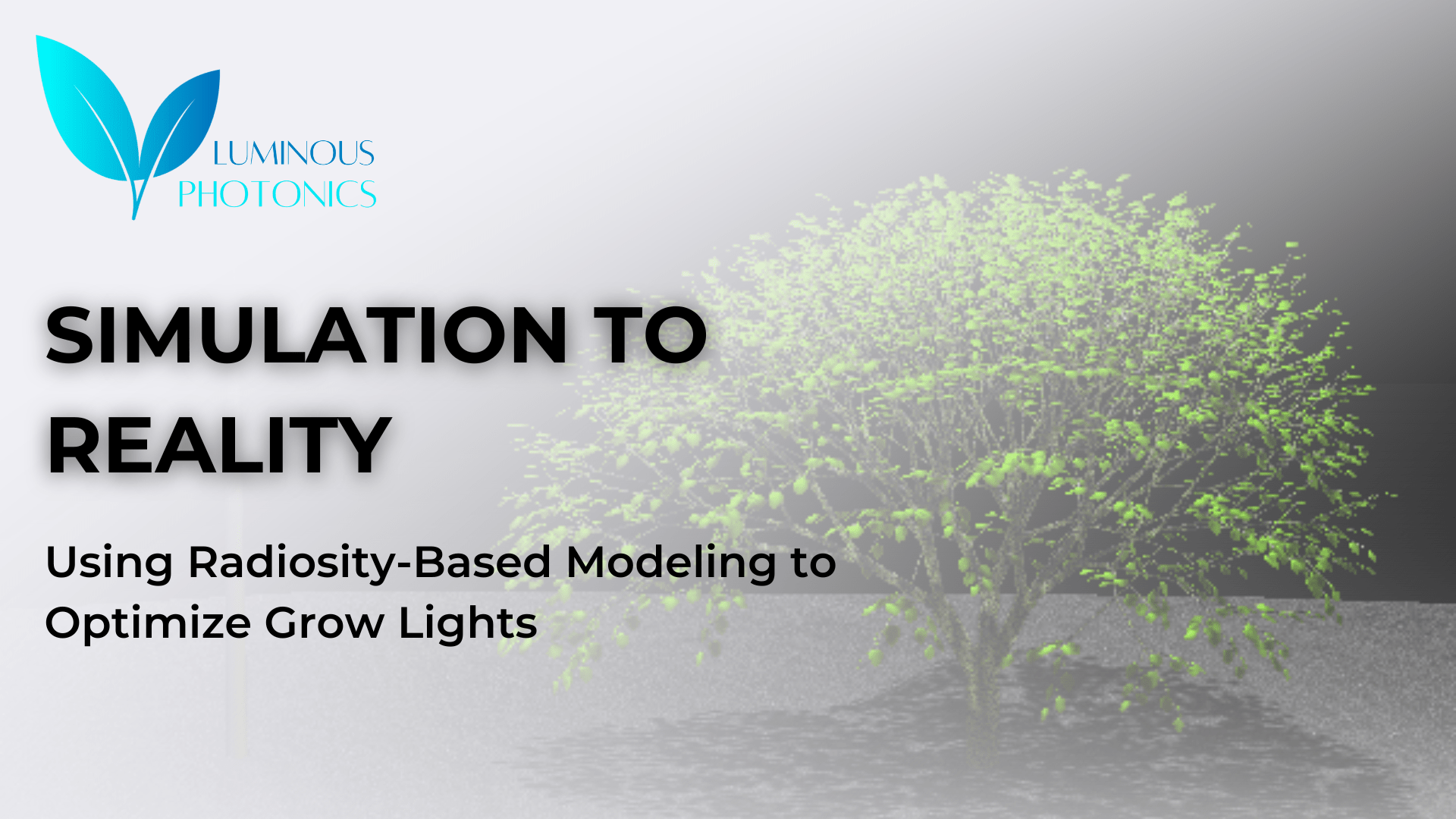From Simulation to Reality: Using Radiosity-Based Modeling to Optimize Grow Lights
Horticultural lighting is undergoing a transformation as growers seek more precise, efficient, and cost-effective ways to optimize plant growth. One of the most powerful tools aiding this revolution is radiosity-based modeling—a simulation technique that provides a highly accurate prediction of how light behaves within a controlled environment. By using advanced lighting simulations, growers can fine-tune their lighting setups to maximize Photosynthetic Photon Flux Density (PPFD) uniformity, energy efficiency, and overall crop yield.
What is Radiosity-Based Modeling?
Radiosity is a physics-based method used to simulate how light is emitted, reflected, and absorbed within a space. Unlike simple direct lighting calculations, radiosity takes into account interreflections, ensuring a more realistic representation of light distribution across plants.
In horticulture, radiosity modeling helps answer crucial questions:
- Where should lights be placed for maximum PPFD uniformity?
- How does light interact with reflective surfaces within a greenhouse or indoor farm?
What is the most energy-efficient way to achieve optimal light coverage?
How Radiosity Modeling Improves Horticultural Lighting
By integrating radiosity models into LED grow light optimization, growers can achieve several advantages:
Achieving Superior PPFD Uniformity
- Traditional grow lights often create hot spots and dark zones, leading to uneven plant growth.
Radiosity-based simulations calculate light distribution across an entire canopy, allowing growers to design high-uniformity lighting setups.
Reducing Energy Waste
- Poorly positioned lighting leads to overlapping beams and wasted energy.
Simulations identify the ideal placement and intensity levels to minimize power consumption while maintaining effective illumination.
Optimizing Reflectance and Light Utilization
- Indoor farms often use reflective surfaces to bounce light back toward plants.
Radiosity models factor in reflectance properties, ensuring light is redirected efficiently rather than being lost.
Customizing Lighting Designs for Different Crops
- Different plants have varying light requirements at each growth stage.
- Using radiosity, growers can design customized light distributions for specific crops, ensuring optimal spectral coverage and intensity.
The Role of AI in Enhancing Radiosity-Based Optimization
- Machine learning and AI-driven optimization algorithms are taking radiosity modeling to the next level. By integrating AI with radiosity simulations, lighting systems can be dynamically adjusted in real time based on plant feedback. This ensures:
- Adaptive lighting control for different growth phases
- Automated adjustments to maintain uniformity as plants grow
Further energy savings by optimizing light output only when necessary
The Future of Grow Light Simulation
With advancements in computational modeling and cloud-based AI analysis, radiosity-driven horticultural lighting systems are becoming more accessible. Future developments will likely integrate:
- Real-time IoT sensor feedback to dynamically update lighting conditions
- Hybrid AI and radiosity models for even better efficiency
Fully automated lighting control systems for greenhouse and vertical farming operations
Conclusion
Radiosity-based modeling is bridging the gap between simulation and real-world agricultural efficiency. By leveraging this advanced lighting technology, growers can create highly uniform, energy-efficient, and productive farming environments. As AI and automation continue to enhance these models, the future of indoor farming looks brighter than ever.
